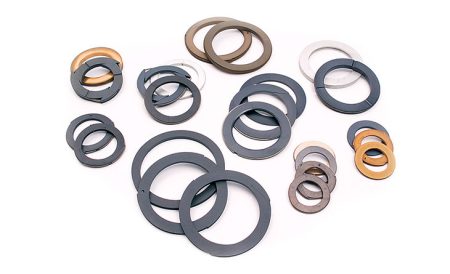Bottle gourd is also known locally as “Lauki” and “Calabash”, It is a member of the Cucurbitaceae family. It is a vigorously growing annual climbing vine. The plant produces white flowers that bear fleshy, bottle-shaped fruits. The fruit is used in the kitchen. Bottle gourd also has health benefits. It aids digestion, lowers blood sugar levels and constipation, cures insomnia and urinary infections, and is an effective sleep aid.
Soil for Bottle Gourd Farming
We can grow it in a variety of soils. It produces the best results when grown in sandy loam to loamy soil. Moreover, you have to prepare the ground for bottle gourd farming with farming machines like New Holland 3600 and others. It will give you the best results.
Popular Varieties
Punjab Barkat: In 2014, it was released. They have long, light green fruits that are cylindrical in shape. The variety is resistant to mosaic disease to a degree. It has a yield of 226qtl/acre on average.
Punjab Long: Punjab Long was released in 1997. They have fruits that are gleaming, cylindrical, and light green. Therefore, it has a high level of long-distance marketing quality. Moreover, it has a yield of 180qtl/acre on average.
Punjab Komal: Punjab Komal was released in 1988. It is a fast-maturing variety that matures 70 days after planting. It bears 10-12 fruits per vine and has medium-sized light green fruit. The variety is resistant to CMV (Cucumber Mosaic Virus). Moreover, it has a yield of 200qtl/acre on average.
Punjab Bahar: It has green fruits that are round in shape. It has a yield of 222qtl/acre on average.
The main varieties of round bottle gourd grown in Himachal Pradesh are Pusa Summer Prolific Round, Pusa Manjri (Sankar variety), and Punjab Round.
In Himachal Pradesh, round bottle gourd farming is done with the Pusa Summer Prolific round variety.
Land Preparation
Well-prepared land is used for bottle gourd farming. Ploughing and harrowing are used to bring the soil to a fine tilth. Land preparation is one of the vital operations for any agriculture. That’s why you should use advanced farming equipment like Swaraj 735 and others for it.
Sowing
The months of February-March, June-July, and November-December are ideal for sowing. Row spacing should be 2.0-2.5m, and plant spacing should be 45-60cm. Seeds are sown 1-2cm deep.
Seeds
A seed rate of 2kg is adequate for one acre of land. For protecting the seeds from soil-borne fungus, the seeds are treated with Bavistin at 0.2 per cent at 3gm/kg.
Fertiliser
Apply FYM (Farm Yard Manure) at 20-25 tonnes per acre. We should apply nitrogen fertiliser at a rate of 28kg/acre in the form of urea at a 60kg/acre rate. The first dose of nitrogen@14kg/acre (urea@30kg/acre) is applied during sowing, and the second dose of nitrogen@14kg/acre (urea@30kg/acre) is used during the first picking.
Irrigation
The crop necessitates immediate irrigation. Irrigation is applied immediately after sowing. 6-7 irrigations are required during the summer season, and irrigation is provided if necessary during the rainy season. Nine irrigations are needed in total.
Weed Control
During the early stages of plant growth, 2-3 hoeings are required to control the weeds. Weeding is done at the same time as fertiliser application. Earthing up is another effective method we should use during the rainy season.
Plant Protection
Fruit fly: They feed on the internal tissues of fruits, causing premature fruit dropping, rotting, and yellowing—Spray 600-700gm of Carbaryl@10% in 150ltr water per acre.
Pumpkin beetles: The beetles feed on themselves and destroy the roots—Spray 600-700gm of Carbaryl@10% in 150ltr water per acre.
Epilachna beetle: The grubs of the Epilachna beetle consume plant parts and destroy them. Spray 600-700gm of Carbaryl@10% in 150ltr water per acre.
Downy mildew: This disease appears with chlorotic spots. Mancozeb@400gm in 150ltr water per acre is sprayed.
Powdery mildew: This disease appears with small, white spots on the leaves and stems. This disease is treated with a 400-500gm spray of M-45 or Z-78.
Mosaic: The disease causes stunted growth and lower yield. For removing mosaic, a spray of Dimethoate@200-250ml in 150ltr water is used.
Harvesting
Crops are ready for harvesting in 60-70 days, depending on variety and season. Medium and tender fruits are harvested based on market demand. Mature fruits are primarily stored for seed production. Using a sharp knife, cut the fruits from the vines. Picking should done every 3-4 days during peak season.
Post Harvest
Maintain an 800m separation distance from other types of sponge gourd. Get rid of any diseased plants in the field. When the fruits reach physiological maturity, they are harvested for seed production. We have to inspect the area 3 times for the production of true to type seeds. Fruits are dried after harvesting, and then the seeds are extracted.
If you need any other farming-related information, stay tuned with us.





